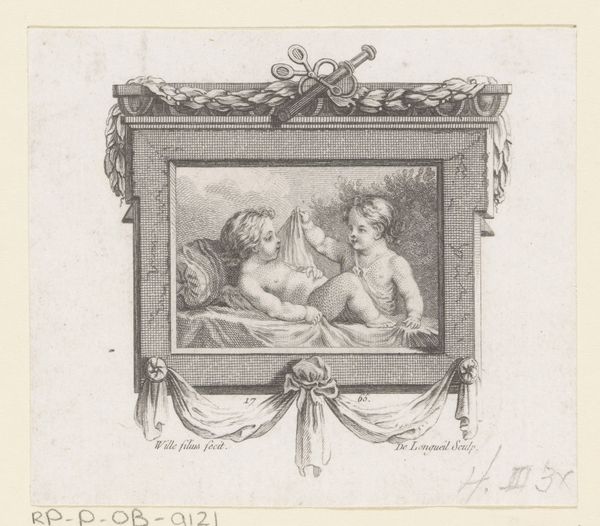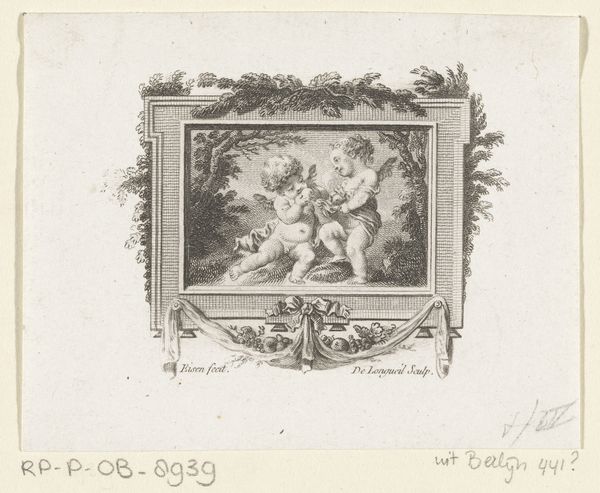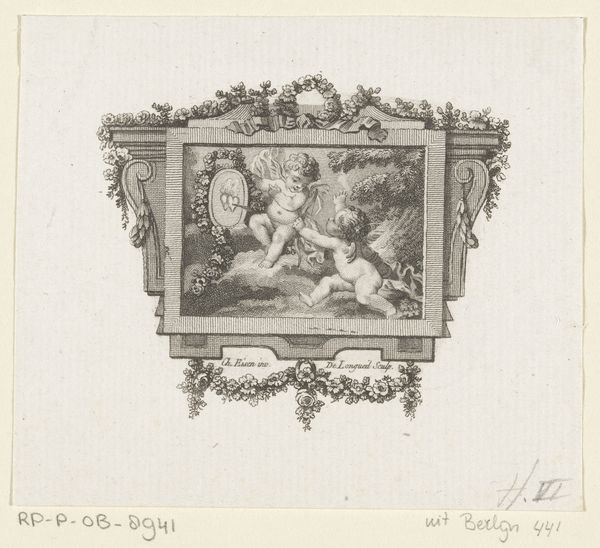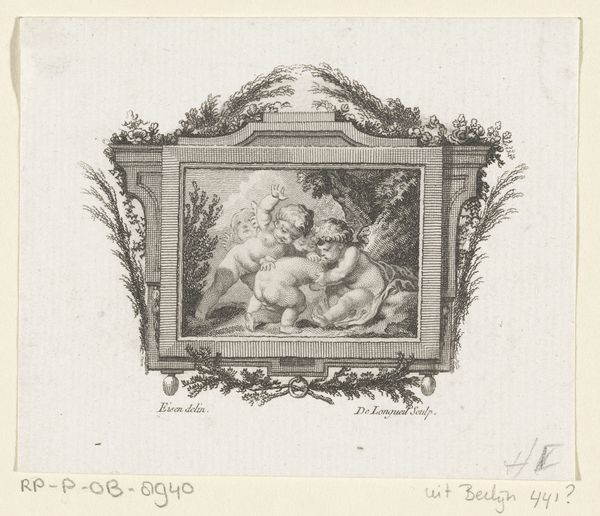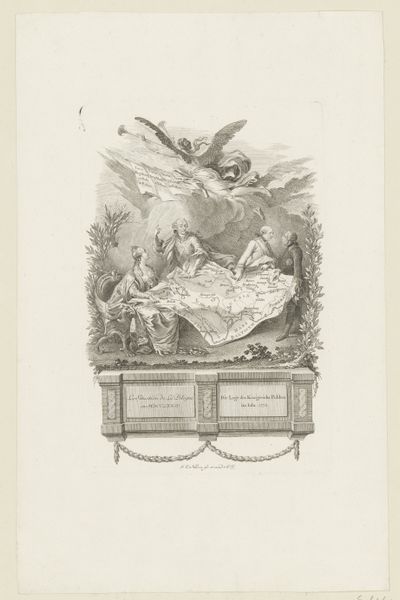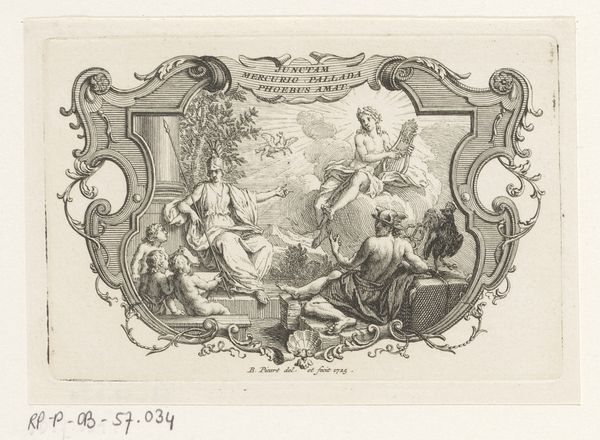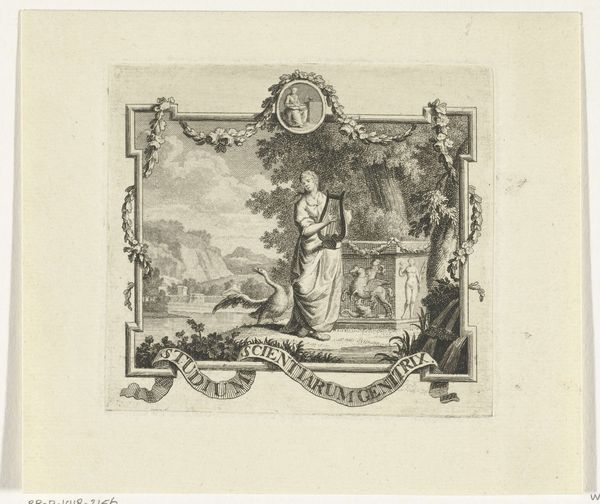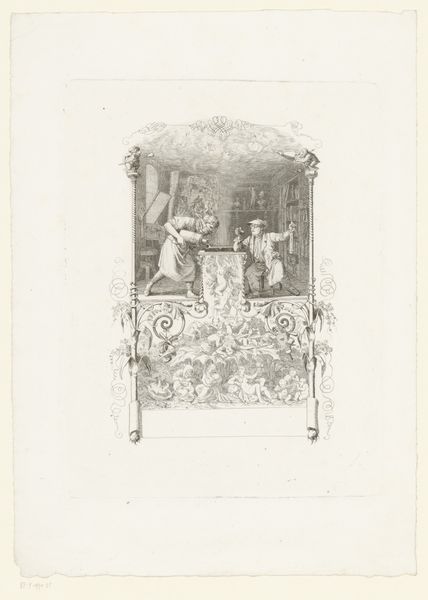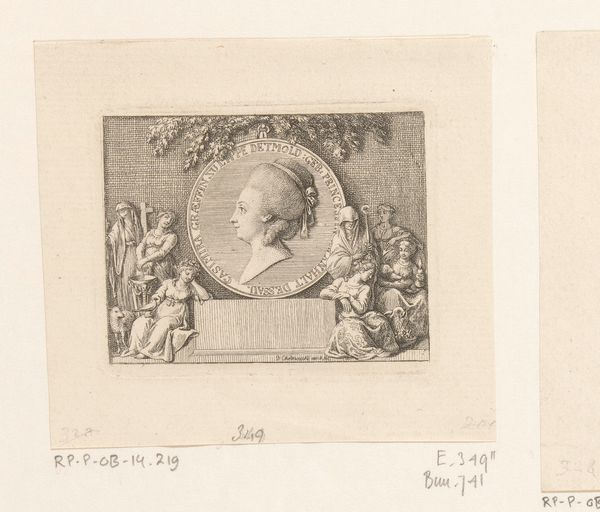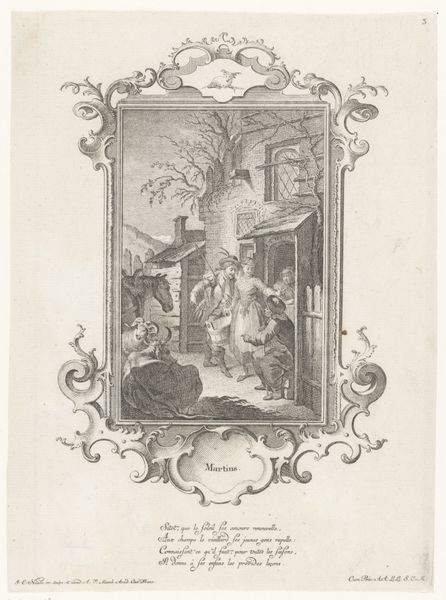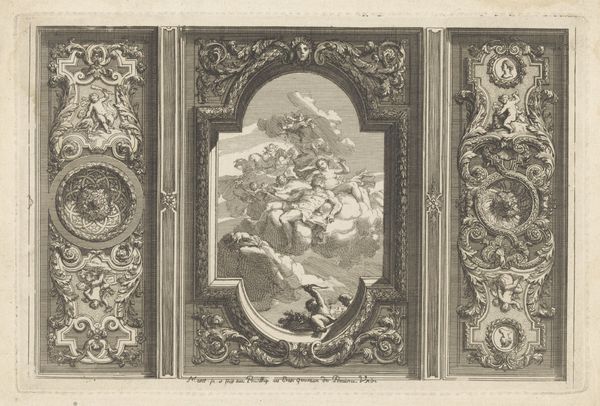
print, etching, engraving
# print
#
etching
#
figuration
#
genre-painting
#
engraving
#
rococo
Dimensions: height 78 mm, width 92 mm
Copyright: Rijks Museum: Open Domain
Editor: This print from 1765, “Vignet met musicerende putto,” by Joseph de Longueil, is so charming! All these cherubic figures make me think of sweetness and lightheartedness, like something you’d see on a fancy confection box. How do you interpret this work? Curator: Indeed. Let's look beyond the immediately decorative. The putti themselves, with their plumpness and miniature wings, tap into a long history of representing innocence and divine love. What do you think the musical instruments signify in this context, given their position within a vignette, a small decorative design? Editor: Maybe they’re symbols of harmony, literally? Like, divine harmony… and, because it’s Rococo, maybe worldly harmony too? Curator: Exactly. Think about music's role in the 18th century. It wasn't just entertainment; it represented order and civilization. Consider, too, the frame around the image. Does its presence suggest something to you? Editor: It does create a sense of…contained joy. Like this happy, harmonious world is set apart, maybe aspirational rather than real? Curator: Precisely. Longueil captures that Rococo tension perfectly – a world of play and beauty framed by the rigid structures of society, using the image of idealized cherubs. The cultural memory, and hope, for perfect harmony is bounded and decorated with these figures and frames. What are your thoughts now? Editor: It’s amazing to consider the layered meanings behind what seems like a simple, decorative image! I definitely see more depth than I did at first glance. Curator: Indeed. Seeing isn't always believing; it is the visual language and understanding of the object's past that informs us, so you are seeing.
Comments
No comments
Be the first to comment and join the conversation on the ultimate creative platform.
